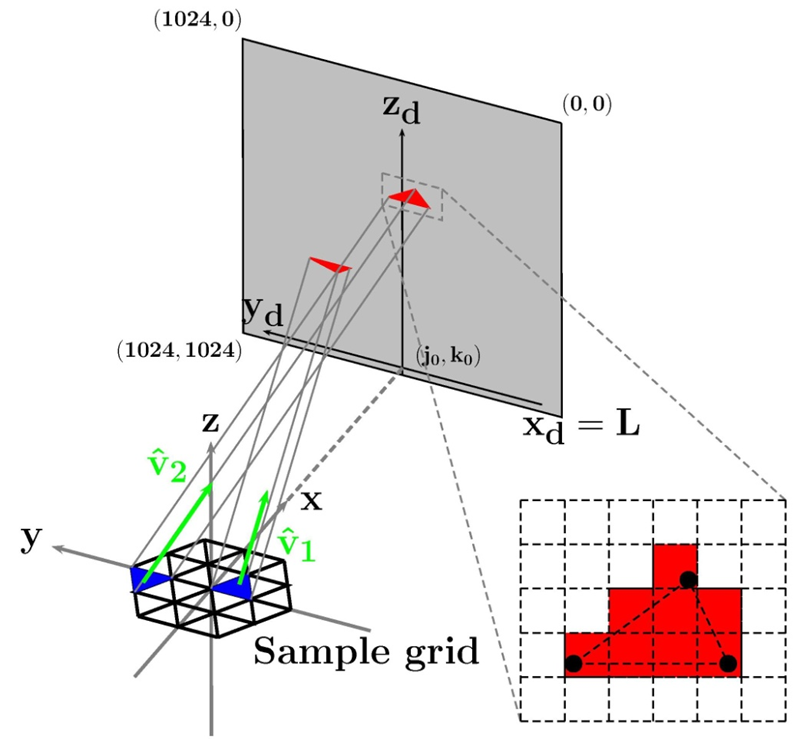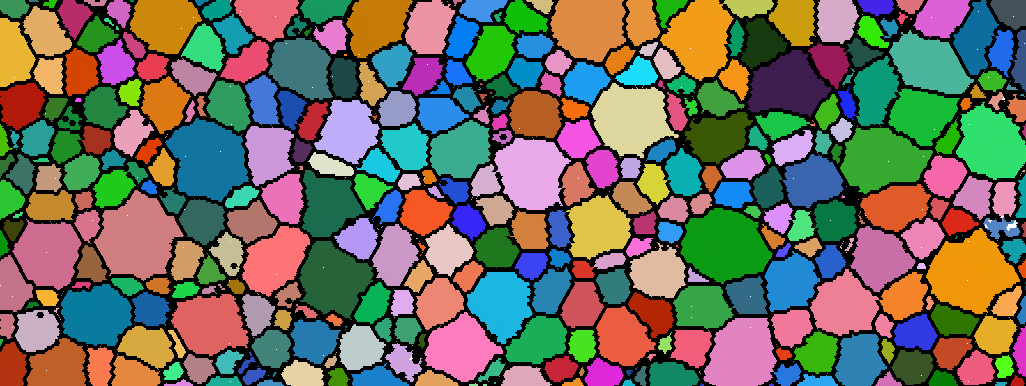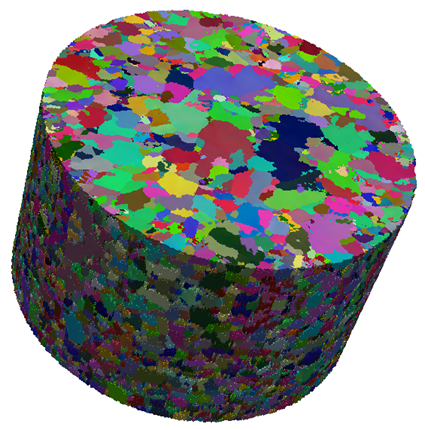







Left: Schematic of computational reconstruction with
meshed sample plane, detector and projection geometry.
Center: A sub-region of a reconstructed microstructure.
Colors are coded to the local crystallographic orientations
(J. Lind thesis, 2013). Right: Three dimensional
reconstructed copper microstructure (R. Pokharel thesis
2013).
For information about Carnegie Mellon University, click
here.
For information about the CMU Physics Department, click
here.
R. M. Suter Research Group
High Energy X-rays Applied to Microstructure Science
Email: suter@andrew.cmu.edu
HEDM data sets are unique and expensive in that they require (1) the use of national facilities that are in high demand (for our work, typically the Sector 1 insertion device beamline (1-ID) at the Advanced Photon Source, Argonne National Laboratory), (2) many hours of dedicated work by a team of scientists during data collection, (3) many hours of both people-time and CPU time go into obtaining valid, detailed reconstructed structures, and (4) many hours of thought, code development and analysis time go into extracting relevant features and interpreting the content of the data sets. First publications based on these data sets typically cannot possibly probe all aspects that could be of interest.
For all these reasons (and consistent with the push for federally supported research data to become open and available to the public – see for example, an NSF policy statement), we plan the release of data so that the materials community can make diverse use the contents. Clearly, with the heavy investments by the students, post-docs, and faculty involved in experiment design, data collection, and analysis, the involved group reserves rights to early publications. Furthermore, it is only after the work involved in honing analysis and studying myriad details, that one becomes knowledgeable as to which aspects are to be trusted quantitatively, which only qualitatively, and which aspects may possibly be misleading. We will attempt to place such perspectives with the data sets as they are released as well as in publications.
 ak, M. J. Demkowicz,
“Crystallographic character of grain boundaries
resistant to
hydrogen-assisted fracture in Ni-basealloy 725,”
Nature Communications, 9, 3386 (2018). article
ak, M. J. Demkowicz,
“Crystallographic character of grain boundaries
resistant to
hydrogen-assisted fracture in Ni-basealloy 725,”
Nature Communications, 9, 3386 (2018). article
 ak, M. J. Demkowicz, “Measuring grain
boundary character distributions in Ni-base alloy
725 using high-energy diffraction microscopy,”
Metallurgical and Materials Transactions A, 48,
354-361 (2017). article
ak, M. J. Demkowicz, “Measuring grain
boundary character distributions in Ni-base alloy
725 using high-energy diffraction microscopy,”
Metallurgical and Materials Transactions A, 48,
354-361 (2017). article Updated August 25, 2020